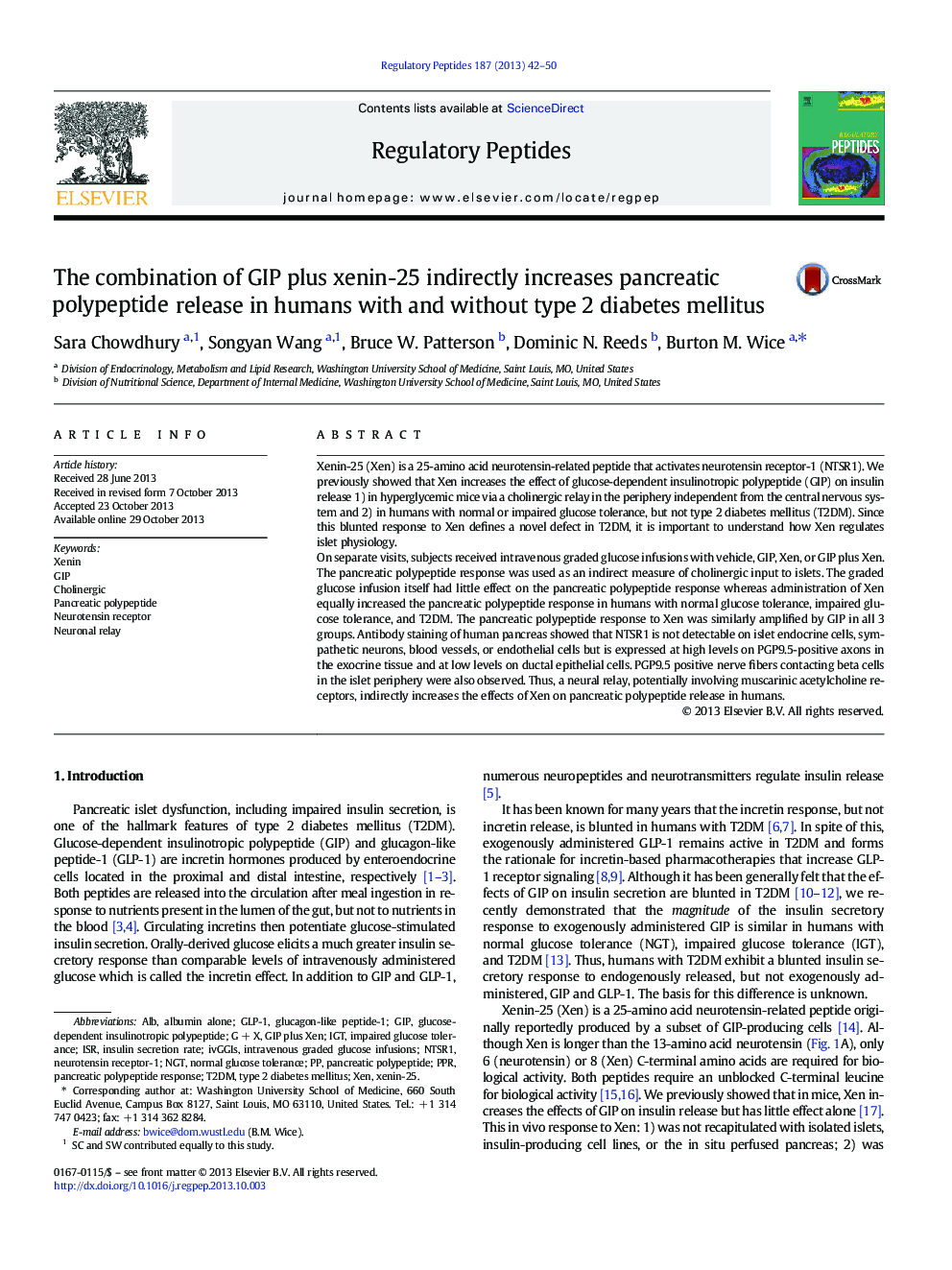| Article ID | Journal | Published Year | Pages | File Type |
|---|---|---|---|---|
| 2022459 | Regulatory Peptides | 2013 | 9 Pages |
•The pancreatic polypeptide response was used to assess cholinergic input to islets.•Xen plus GIP increased cholinergic input to islets in humans with/without T2DM.•Antibody staining showed that Xen receptors are present on pancreatic neurons.•Xen receptors were not detected on islet endocrine cells.•Effects of Xen may be mediated by a neural relay in humans.
Xenin-25 (Xen) is a 25-amino acid neurotensin-related peptide that activates neurotensin receptor-1 (NTSR1). We previously showed that Xen increases the effect of glucose-dependent insulinotropic polypeptide (GIP) on insulin release 1) in hyperglycemic mice via a cholinergic relay in the periphery independent from the central nervous system and 2) in humans with normal or impaired glucose tolerance, but not type 2 diabetes mellitus (T2DM). Since this blunted response to Xen defines a novel defect in T2DM, it is important to understand how Xen regulates islet physiology.On separate visits, subjects received intravenous graded glucose infusions with vehicle, GIP, Xen, or GIP plus Xen. The pancreatic polypeptide response was used as an indirect measure of cholinergic input to islets. The graded glucose infusion itself had little effect on the pancreatic polypeptide response whereas administration of Xen equally increased the pancreatic polypeptide response in humans with normal glucose tolerance, impaired glucose tolerance, and T2DM. The pancreatic polypeptide response to Xen was similarly amplified by GIP in all 3 groups. Antibody staining of human pancreas showed that NTSR1 is not detectable on islet endocrine cells, sympathetic neurons, blood vessels, or endothelial cells but is expressed at high levels on PGP9.5-positive axons in the exocrine tissue and at low levels on ductal epithelial cells. PGP9.5 positive nerve fibers contacting beta cells in the islet periphery were also observed. Thus, a neural relay, potentially involving muscarinic acetylcholine receptors, indirectly increases the effects of Xen on pancreatic polypeptide release in humans.
